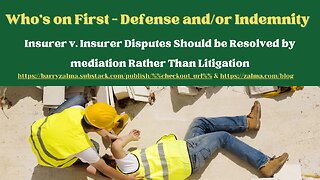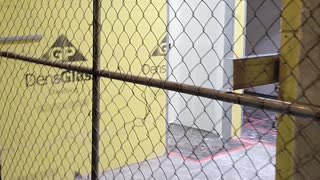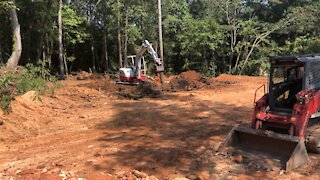Premium Only Content

Structural Failures & Construction Defect Litigation
A Video Explaining Insurance for Construction Defects Regarding Structural Failures
Structural integrity failures can involve any of the following:
concrete;
masonry;
carpentry; or
foundations.
Defects related to site preparation can be caused by any of the following:
building on expansive soil or other defective soils incapable of properly supporting structures;
building on contaminated soils;
lack of a slab-on-grade foundation when the soils are acidic and can cause the deterioration of concrete; or
building on improperly compacted soils, which can cause interior distress to cabinets and countertops, make doors difficult to open and cause structures to settle and cracking in stucco, drywall, plaster interior walls, windows, tile floors, concrete flatwork, slabs, and garage flooring.
In Texas, when a completed home developed problems with a shifting foundation, a suit was filed alleging violations of the Texas Deceptive Trade Practices Act (DTPA) and negligence. On the first day of trial, the plaintiff settled with one defendant and proceeded against another. The District Court granted a directed verdict on the claim that there was a violation of the DTPA with a breach of an implied warranty of good-and-workmanlike performance. Only the plaintiff’s negligence claim was submitted to the jury, which found no negligence on defendant’s part. The district court rendered a take-nothing judgment. [Codner v. Arellano, 40 S.W.3d 666 (Tex.App. Dist.3 2001). See also Parmely v. Hildebrand, S.D. 83, 630 N.W.2d 509 (2001), where the seller was found to have made adequate disclosures about expansive soils at time of sale and was not liable for soil expansion damages.]
The Ninth Circuit, dealing with the right to insurance for damages caused by expansive soil, found that under California law, a latent defect exclusion applies to third party negligence that is discoverable only through subsequent intensive expert investigation. Because there is no evidence that the contractor’s negligence in this case was discoverable, short of an in-depth expert inspection after-the-fact, the Ninth Circuit concluded that State Farm was entitled to summary judgment on its exclusion for latent defects. [Winans v. State Farm Fire and Casualty Co., 968 F.2d 884 (9th Cir. 1992).]
© 2021 – Barry Zalma
Barry Zalma, Esq., CFE, now limits his practice to service as an insurance consultant specializing in insurance coverage, insurance claims handling, insurance bad faith and insurance fraud almost equally for insurers and policyholders.
He also serves as an arbitrator or mediator for insurance related disputes. He practiced law in California for more than 44 years as an insurance coverage and claims handling lawyer and more than 54 years in the insurance business.
He is available at http://www.zalma.com and zalma@zalma.com. Mr. Zalma is the first recipient of the first annual Claims Magazine/ACE Legend Award. Over the last 53 years Barry Zalma has dedicated his life to insurance, insurance claims and the need to defeat insurance fraud. He has created the following library of books and other materials to make it possible for insurers and their claims staff to become insurance claims professionals.
Go to my articles at https://zalma.substack.com, the podcast Zalma On Insurance at https://anchor.fm/barry-zalma; Follow Mr. Zalma on Twitter at https://twitter.com/bzalma; Go to Barry Zalma videos at https://www.rumble.com/zalma ; Go to Barry Zalma on YouTube- https://www.youtube.com/channel/UCysiZklEtxZsSF9DfC0Expg; Go to the Insurance Claims Library – https://zalma.com/blog/insurance-claims-library/ The last two issues of ZIFL are available at https://zalma.com/zalmas-insurance-fraud-letter-2/ podcast now available at https://podcasts.apple.com/us/podcast/zalma-on-insurance/id1509583809?uo=4
-
 10:17
10:17
Barry Zalma, Inc. on Insurance Law
9 months agoWho's on First - Defense and/or Indemnity
133 -
 1:04
1:04
Erwin06
3 years ago $0.01 earnedHouse construction
64 -
 0:26
0:26
joeballer38
3 years agoConstruction site
20 -
 0:46
0:46
mgambrell2
3 years ago $0.01 earnedLevelground Construction
17 -
 2:27:37
2:27:37
The Black and Jewish Podcast with Ashira Solomon
3 months agoEp. 3 Christians Are Biblically Illiterate
13.4K14 -
 1:53:43
1:53:43
The Quartering
6 hours agoKamala's Desperate Attempt To Stop Trump & Installed As President! House Race Update New Border Czar
97.5K21 -
 1:27:19
1:27:19
Russell Brand
6 hours agoKamala Goes BANKRUPT & WARS w/Biden + President Trump Announces Plan To RECLAIM Free Speech - SF490
219K273 -
 11:32
11:32
Silver Dragons
4 hours agoIs This GAME OVER for SILVER?
16.7K8 -
 9:04
9:04
Gun Owners Of America
1 day agoTrump Promises To "Rip Up" ATF Rules
13K16 -
 1:49:13
1:49:13
vivafrei
7 hours agoThe Absolute State of Canada - Artur Pawlowski Interview AND MORE CANADIAN MADNESS! Viva Frei
112K14